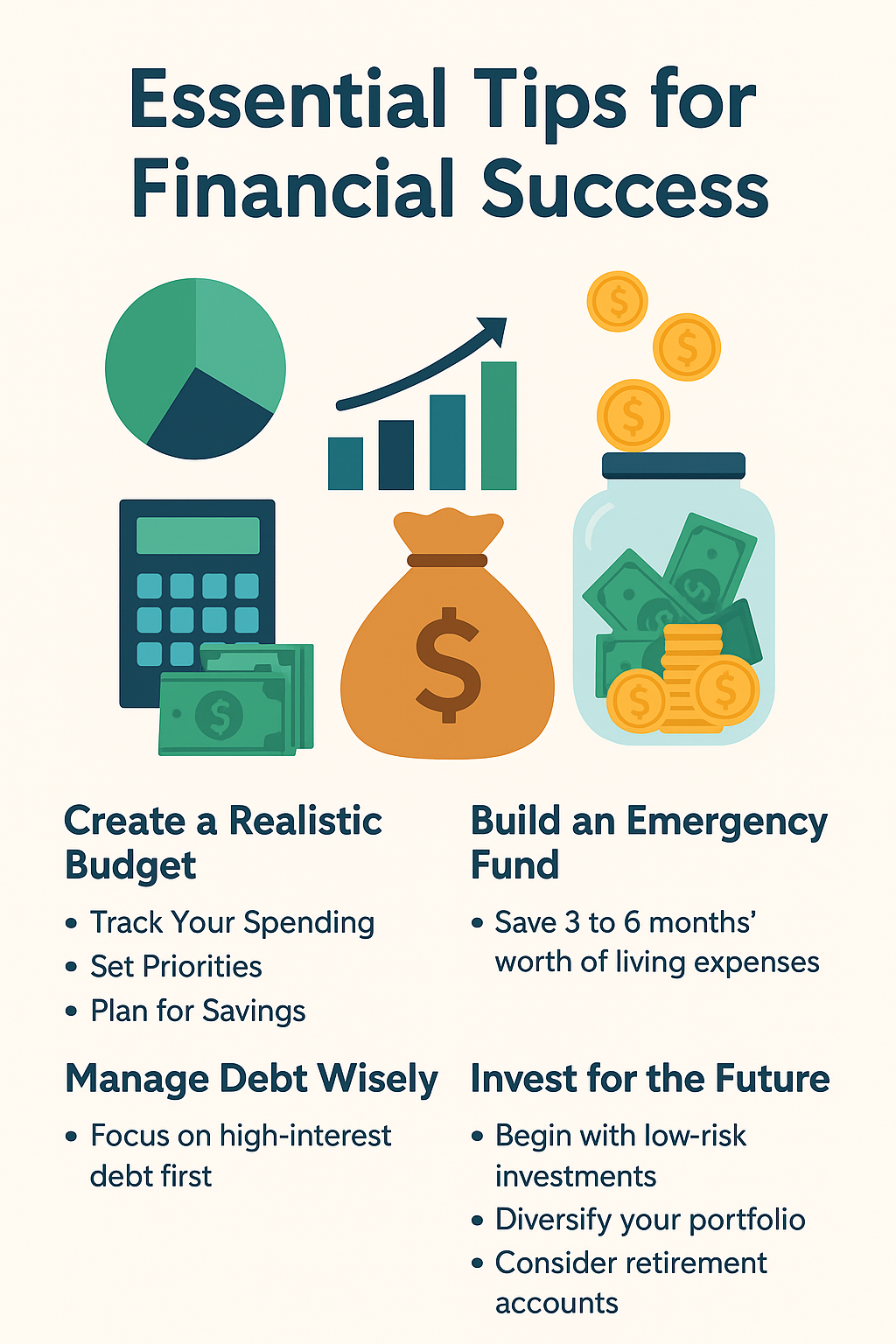Achieving financial freedom is a goal many people dream of but few truly reach. Financial freedom means having enough savings, investments, and income to support your desired lifestyle without worrying about money. Whether you’re just starting your financial journey or improving your current situation, following these eight steps can set you on the path to long-term financial independence.
1. Set Clear Financial Goals
Financial freedom starts with clear and achievable goals. Identify what financial freedom means to you—whether it’s retiring early, buying a home, or living debt-free. Write down your short-term, mid-term, and long-term goals and review them regularly to track your progress.
2. Create and Stick to a Budget
A realistic budget is your financial roadmap. Track your income, expenses, and savings each month. Prioritize essential expenses and cut unnecessary spending. Use budgeting tools or apps to stay disciplined. The goal is to spend less than you earn and direct the surplus toward savings or investments.
3. Build an Emergency Fund
Unexpected events can derail your financial progress. That’s why an emergency fund is essential. Aim to save at least three to six months’ worth of living expenses in a separate account. This fund acts as a financial safety net, preventing you from relying on credit cards or loans during emergencies.
4. Pay Off Debt Strategically
Debt can be one of the biggest barriers to financial freedom. List all your debts and prioritize high-interest ones first, such as credit card balances. Consider strategies like the debt snowball (paying off the smallest debts first) or debt avalanche (focusing on high-interest debts). Becoming debt-free allows you to invest more of your income in your future.
5. Save and Invest Consistently
Saving is the foundation of wealth building, but investing is what accelerates it. Set up automatic savings for retirement accounts, mutual funds, or other investment vehicles. Start small, but be consistent. Over time, compound interest will grow your wealth exponentially.
6. Diversify Your Income Sources
Relying on one source of income is risky. Explore side hustles, freelance work, or passive income opportunities such as rental properties or dividend-paying stocks. Multiple income streams not only boost your earnings but also provide financial security in uncertain times.
7. Protect Your Wealth
Financial freedom isn’t just about earning—it’s also about protecting what you’ve built. Ensure you have proper insurance coverage (health, life, property) and consider estate planning or a will to safeguard your assets. These steps protect your family and your future.
8. Keep Learning About Personal Finance
The journey to financial freedom doesn’t stop once you reach your goals. Stay informed about new investment strategies, financial tools, and money management practices. Read books, attend seminars, and follow financial experts to continue improving your financial literacy.
Conclusion
Financial freedom is a journey, not a destination. By following these eight steps—setting goals, budgeting, saving, investing, and protecting your wealth—you can take control of your financial future. Start today, stay consistent, and watch your financial independence grow.







